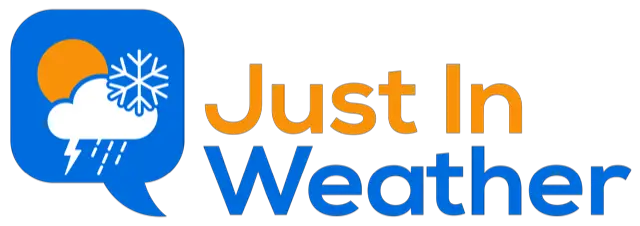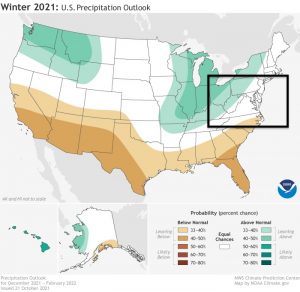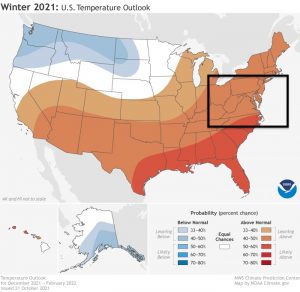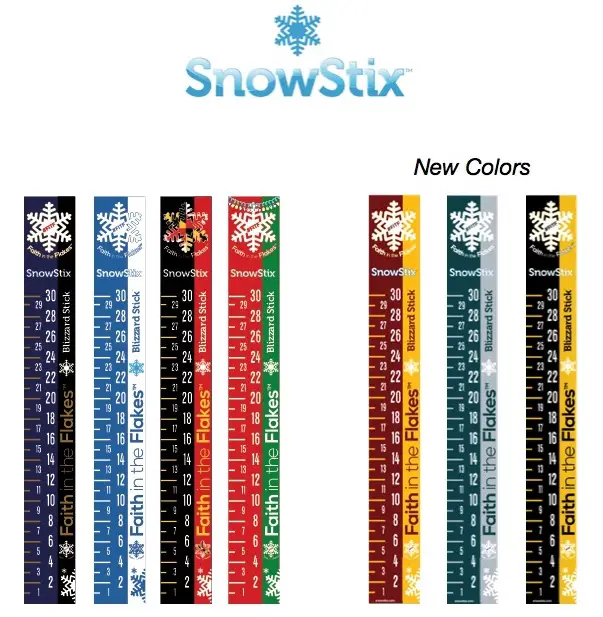November 3 2021
Winter began knocking on the door with the first freeze and frost of the season on the Mid Atlantic. This seemed like a perfect time to touch on the Farmer’s Almanac Winter Outlook compared to NOAA’s Winter Outlook. There’s a catch, and yet some commonality:
There are 4 different national weather almanacs on display here, and even more exist. However, the majority seem to align in their disagreement with NOAA’s blanket mild call. There are not identical and does lend to the idea that if you don’t like what you read, keep searching and you will eventually find it.
Quick version: For Mid Atlantic:
Winter starting cold and hinting at snowy.
Three of the four ‘almanacs’ discussed here lean in that direction. The last one is similar to the NOAA outlook.
NOAA for Mid Atlantic:
Winter expected to trend warm and less snowy. This is heavily based on La Nina as I discussed in my report about reading the fine print. There was wiggle room for interpretation to still get snow storms. More on that at the bottom of this report.
Many Almanacs For or By Farmers
When you hear of the Farmer’s Almanac, which one do you think of? There are more than just these four shown here.
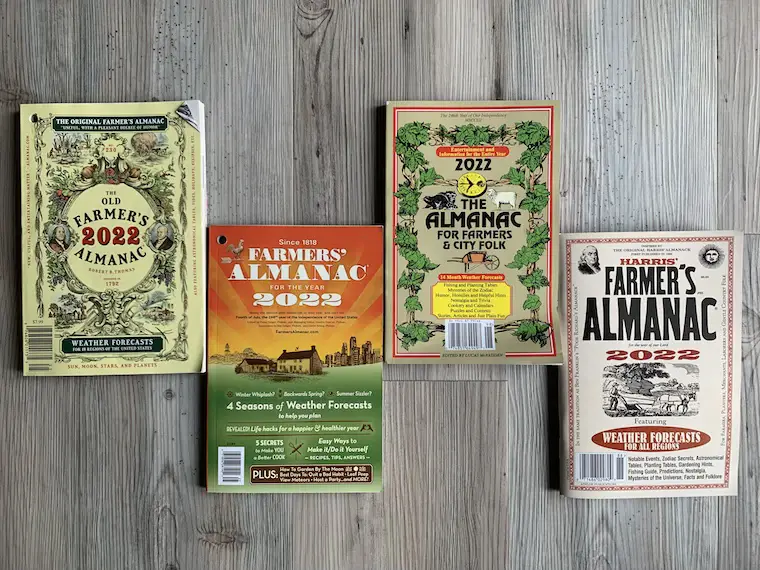
“The Farmer’s Almanac called it”. But which one?
I’ve heard that line almost every winter about a storm or big event. Some “Farmers Almanac” gets credit for getting it right, and someone will be sure to mention it. Then I realized, you can search so many ‘almanacs’ and collectively they each may ‘get it’ at some time or another.
The Old Farmer’s Almanac is labeled “The Original” and was founded in 1792
Farmers’ Almanac has been published since 1818
The Almanac For Farmers & City Folk
Harris’ Farmer’s Almanac has ties to the oldest publication in 1692 with The Original Harris’ Almanack.
Have you ever purchased or read any of these? What is fascinating is that these books published long before winter, and have similar names and easy to get confused with each other.
For what it’s worth, two of these proudly claim they were first published well over 200 years ago. Harris’ is a regrouping of the original made in 1692. Since they are still around, they must be doing something right.
All of these include lots of info about zodiac, astronomy tables, planting, gardening, and fishing tables. Each also has unique articles about nature, science, and even cooking. The also contain a lot of interesting information about night sky, lunar cycles, and growing season tricks… Among other stuff.
The Farmers’ Almanac has a very interesting article about Sun Spots and how it does play a role in their seasonal outlooks.
Here is a comparison and contrast. You will see they break their regions down differently and have different variations for winter. I will give a broad brush and then leave it up to you to credit each one and get your own copy (in most grocery stores) to explore more.
Here are The Old Farmer’s Almanac, Farmer’s Almanac, Almanac For Farmer’s & City Folk, and Harris’ Farmers Almanac. Again, these are the main national publications, but there are many other local booklets you can find in your supermarket check out lane.
The Old Farmer’s Almanac
Since 1792
Map shows: Cold and Snowy
But we need to explore regional breakdown
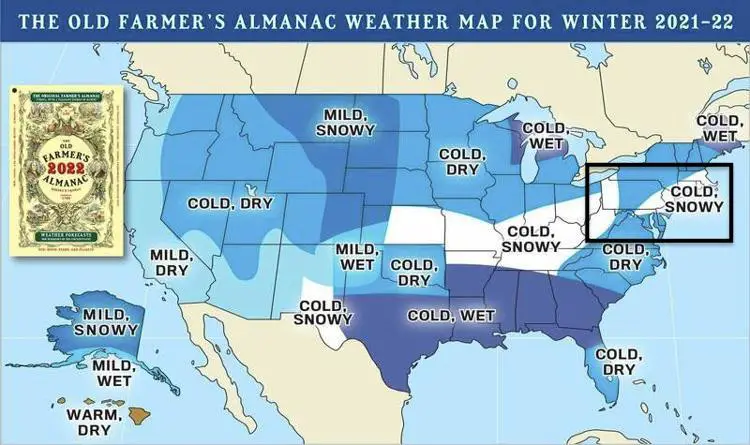
Regional Breakdown
A closer inspection of the outlook is found with Corridors 2 and 3
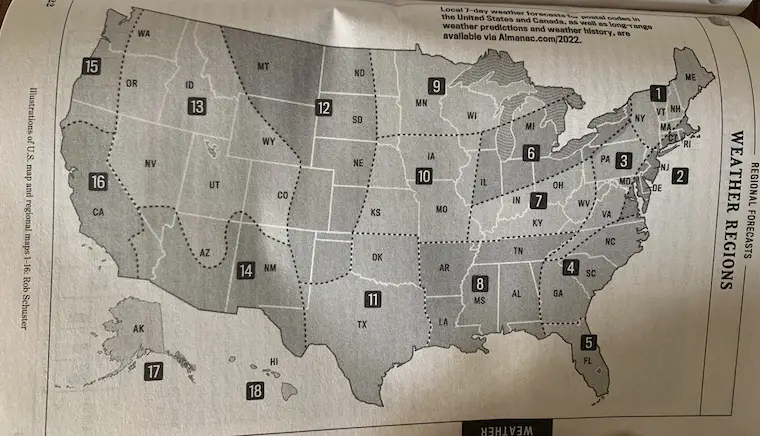
Corridor 2- Mid Atlantic
Broad Outlook:
Temperatures expected to be colder.
Precipitation expected to be more North and less South. But where is the dividing line?
Corridor 3 – Appalachians
Temperatures expected to be colder.
Precipitation expected to be lower, however
Snow will be near normal!
See more at almanac.com
Farmer’s Almanac
Since 1818
“Typical Winter Chill”
“Stormy January, Tranquil February”
Ironically we historically have our biggest winter storms in February around President’s Week.
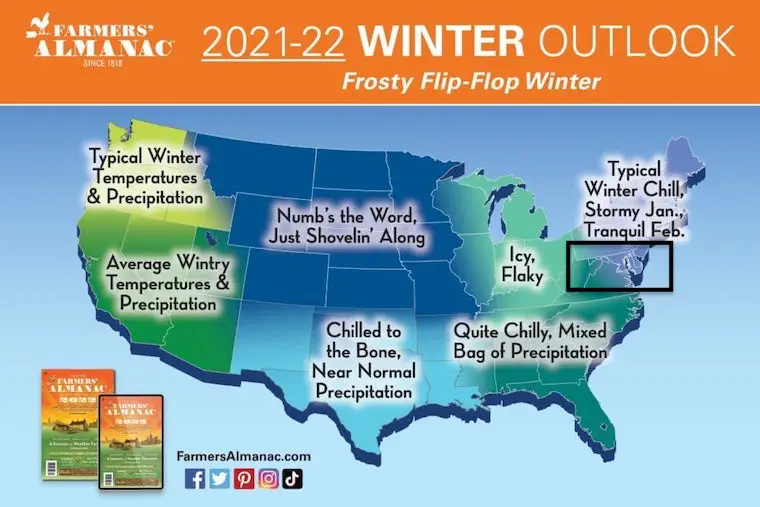
Exploring More
If you purchase this publication, our region is split into two zones…
Zone 1: Maryland, Delaware, and Pennsylvania
Zone 3: Virginia and West Virginia
No broad bush summaries were given beyond the map. But you can see their expectation for groups of days each month.
See more at: Farmers Almanac.com
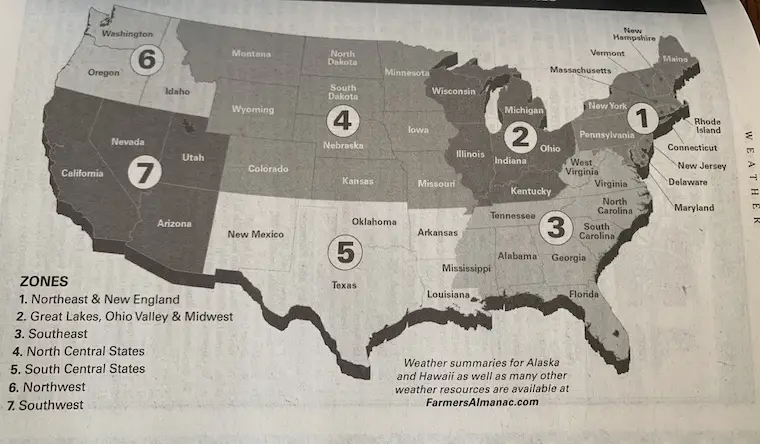
The Almanac for Farmers & City Folk
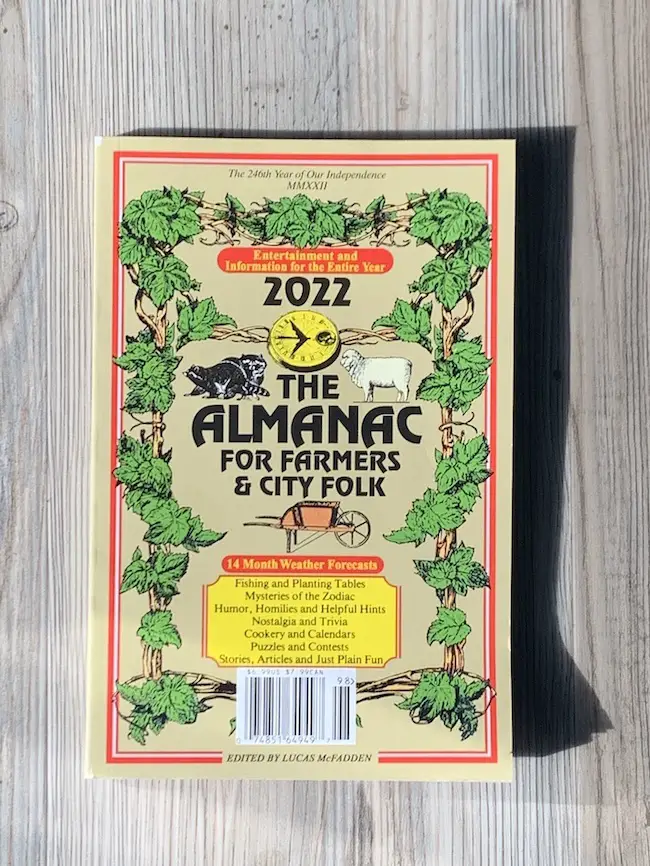
November- December
Temperatures expected to be colder than normal.
Precipitation expected to be “Dry”.
January
Temperatures expected to be mild
Precipitation expected to be “wet”. Not clear about snow.
February
Temperatures expected to be colder.
Precipitation expected to be “dry”.
Weather Zones
15 – Virginia
16 – Pennsylvania
17 – Maryland and Delaware
See more at The Almanac
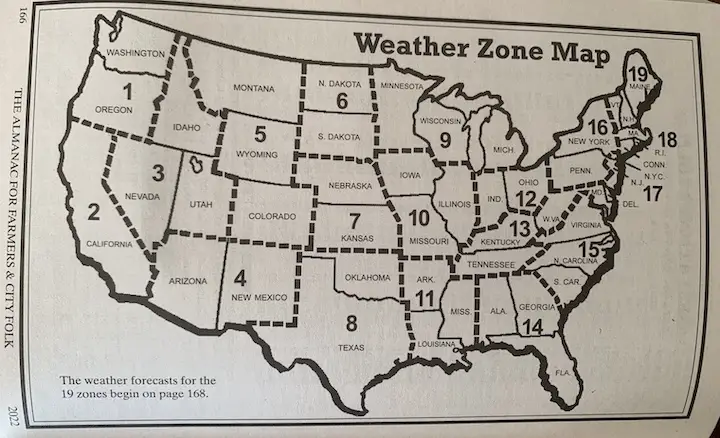
Harris’ Farmers Almanac
The oldest! First published in 1692

USA Regions
We are in region 9: This outlook resembles the warmer outlook that NOAA displayed.
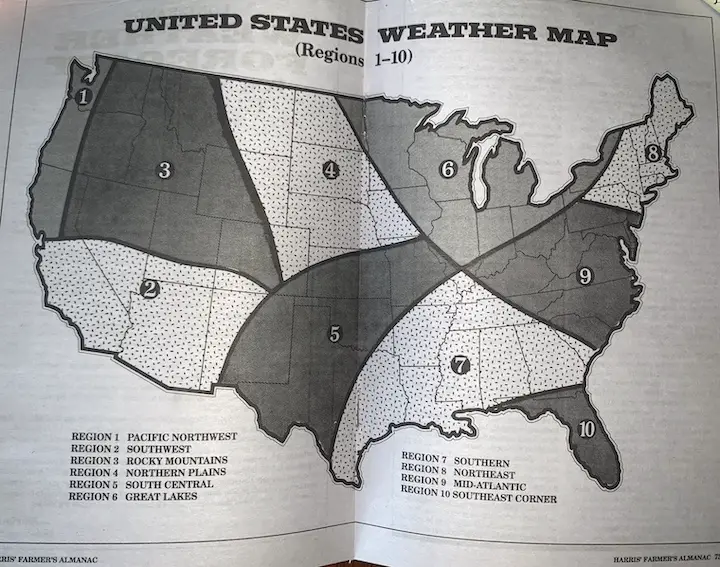
November
Near normal
December
Temperatures will be warmer
Precipitation will be near normal
January
Temperatures warmer than normal
Precipitation will be near normal
February
Temperatures and Precipitation near normal.
Read More: There is no website for this publication. But you can not find a local store with this, you can get a copy at Outdoor Group Store
About that NOAA Outlook
This is heavily weighted by La Niña. Click here to see my full report
Weather posts straight to your inbox
Sign up and be the first to know!
Also See The Winter Outlook Series:
Winter Folklore Checklist
NOAA Winter Outlook- But Read The Fine Print
Signals For Early Start To Winter In November
Winter Outlook Series: La Nina Double Dip
Nor’easters May Give Hint For Winter La Nina Pattern
Faith in the Flakes Gear
SNOWSTIX – Available Now
Please share your thoughts, best weather pics/video, or just keep in touch via social media
Facebook: Justin Berk, Meteorologist
Twitter: @JustinWeather
Instagram: justinweather



